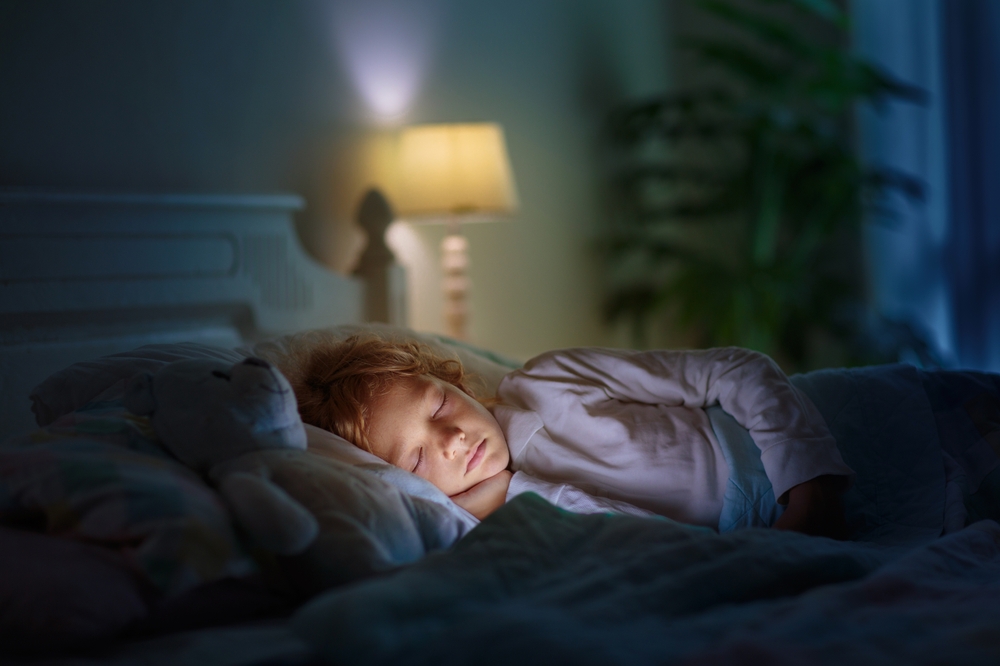June 7, 2024
Is Night Driving Hazardousness Considered in Accident Claims?
Driving at night presents unique challenges and risks, which can contribute to the severity and frequency of automobile accidents. Lower visibility, a higher likelihood of encountering impaired drivers, and the increased presence of fatigue can all impact a driver’s ability to operate a vehicle safely after dark. Consequently, these nighttime driving hazards can significantly influence the outcomes of accident claims.
Insurance companies and legal professionals often take into consideration the time of day an accident occurs when assessing claims. Nighttime accidents can invoke a careful examination of factors such as street lighting, driver alertness, and adherence to traffic regulations specific to nocturnal travel. Claimants and defendants alike may find that the hazardous conditions associated with night driving affect liability determinations and compensation amounts.
Understanding the role that nocturnal driving conditions play in accident analysis is crucial for those involved in such claims. It assists all parties in establishing the context of the accident, identifying potential contributing factors to the crash, and building comprehensive and fair claims.

Understanding the Risks of Night Driving
Night driving significantly increases the risk of accidents due to reduced visibility and increased difficulty in perceiving and judging distance. Various factors contribute to the heightened dangers during nighttime.
The Dangers and Common Causes of Night Driving Accidents
Night driving accidents are often more severe than daytime incidents for several reasons. Reduced visibility is a primary concern, as drivers must contend with both darkness and the glare of headlights from other vehicles. These conditions can impair a driver’s ability to detect pedestrians, obstacles, and other cars. Another significant cause is driver fatigue, which tends to peak during the late evening and early morning hours. Drowsiness can slow reaction times, decrease awareness, and impair judgment.
Here’s a list of common causes of car accidents linked with accidents during nighttime driving:
- Decreased visibility: Challenges in seeing road markings, signs, and unexpected obstacles.
- Glare from headlights: Temporary blindness or distraction from oncoming traffic.
- Impaired night vision: Age or medical conditions can exacerbate visibility issues.
- Higher likelihood of impaired driving: Evening hours have a higher incidence of drivers under the influence of alcohol or drugs.
- Speeding: Lower traffic volumes can encourage drivers to exceed the speed limit, making it harder to react to something unexpected.
- Wildlife crossings: Animals are more active during the night, increasing the chances of animal-related accidents.
- Inadequate lighting: Poorly lit roads or broken streetlights can contribute to accidents.
It is important for drivers to be aware of these dangers and practice safe driving habits to reduce the likelihood of accidents caused by night driving. Additionally, understanding these factors can be crucial when determining liability in the event of an accident claim.
Legal Aspects of Night Driving Accidents
When an accident occurs at night, specific legal considerations come into play, particularly concerning negligence, liability, and the involvement of insurance companies. These elements determine the outcome of accident claims and require careful analysis under the law.
Proving Negligence and Liability
In night driving accidents, proving negligence is a crucial step in establishing liability. Evidence such as traffic violation records, witness statements, and accident reconstruction reports often come into play. The following points are considered:
- Visibility: Was the driver’s visibility compromised due to inadequate lighting or failure to use headlights?
- Fatigue and Impairment: Was the driver fatigued or under the influence of substances, which are more common at night?
- Adherence to Traffic Laws: Did the driver breach traffic laws that are especially pertinent at night, such as speed limits or stop signals?
The burden lies with the claimant to show that the other party breached their duty of care, resulting in the accident.
The Role of Insurance Companies
Insurance companies play a significant role in night driving accident claims. They assess the accident’s circumstances, determine fault based on the collected evidence, and negotiate settlements. Key actions by insurance companies include:
- Investigation: Gathering detailed information about the accident scene and involved parties’ driving records.
- Policy Review: Examining the terms of the policyholder’s coverage to determine the extent of liability.
- Claims Adjustment: Calculating the value of the claim based on damages and policy limits.
Insurers may also dispute claims if they believe their policyholder is not at fault, leading to further legal proceedings. It is important to understand the terms of an insurance policy and what it covers in the event of a night driving accident.
Seeking Professional Legal Support
In the event of a night driving accident, securing the support of skilled legal professionals is critical. High-quality representation can substantially influence the outcome of an accident claim.
Importance of Legal Assistance
After a night driving accident, the Importance of seeking legal assistance cannot be overstated. Legal professionals can navigate the complex network of laws and procedures to ensure a fair evaluation of any claim. They are instrumental in:
- Gathering evidence: Night driving accidents often involve unique challenges such as poor visibility and fatigue, leading to disputes over liability. Attorneys gather critical evidence, including witness statements and surveillance footage, to build a strong case.
- Negotiating with insurance companies: Insurance providers may attempt to minimize compensation. Legal experts advocate for the client’s best interests, aiming to secure fair compensation.
- Representing in court: If a fair settlement cannot be achieved, legal counsel is prepared to present a compelling case in court to argue for just reparation.
How Injury LawStars Offer Aid
Injury LawStars is a dedicated team of legal professionals specializing in personal injury cases, including those involving night driving accidents. Here’s how they offer aid:
- Expert case assessments: They conduct thorough case evaluations to advise clients on the best legal pathways.
- Specialized knowledge: Their specialization in personal injury law in Clermont means they’re well-versed in the intricacies of night driving cases.
- Client-centric approach: Injury LawStars prioritizes the client’s recovery and aims to alleviate the stress of the legal process, focusing on getting results that compensate for their client’s losses after a night driving accident.
This legal team works diligently to support victims and help navigate the challenges of post-accident claims with assertiveness and expertise.
Compensation and Recovery Process
In accident claims involving night driving, understanding the types of damages available and the legal steps required for recovery is critical for victims. Adequate preparation and knowledge of procedures are essential for a successful claim.
Types of Recoverable Damages
Victims of nighttime driving accidents may be entitled to economic, non-economic, and, in some cases, punitive damages. Economic damages cover quantifiable losses such as:
- Medical expenses: Current and future costs of treatment
- Lost wages: Compensation for lost income and loss of earning capacity
- Property damage: Costs to repair or replace the vehicle
Non-economic damages are subjective and include:
- Pain and suffering: Compensation for physical and emotional distress
- Loss of consortium: Impact on the victim’s relationships
Punitive damages are not commonly awarded but may be applicable in cases of gross negligence.
Navigating Legal Procedures
The legal process for recovering damages due to a night driving accident involves several key steps:
- Documentation: Gathering police reports, medical records, and witness statements.
- Legal filing: Initiating a claim within the statute of limitations.
- Evidence presentation: Demonstrating the other party’s fault and the extent of damages.
- Negotiation: Engaging in discussions with insurance companies or opposing counsel to reach a settlement.
- Trial: If a settlement cannot be reached, the case may proceed to trial where a judge or jury will make a final decision.
Victims are encouraged to seek the assistance of an experienced Florida car accident lawyer in vehicular accident claims to navigate this complex process.
Prevention and Safety Measures
Implementing certain precautions can significantly reduce the risks associated with night driving. Tailoring driving habits and vehicle maintenance for nocturnal conditions are keys to minimizing hazards.
Driving Safety Tips
- Increase Visibility: Before setting out, drivers should ensure their headlights are clean and properly aligned for maximum efficiency. Using full beams in unlit areas where there are no oncoming vehicles helps to improve visibility.
- Maintain Vehicles: Regular checks on brake lights, turn signals, and windshield wipers are crucial as they are the primary means of communication and vision clearance during night driving.
- Stay Alert: Consuming caffeine in moderation can help drivers remain alert. They should also take frequent breaks to combat fatigue, which is more common during night driving.
- Reduce Speed: Driving at lower speeds allows more reaction time and compensates for the reduced visibility and potential hazards of nighttime driving.
- Minimize Distractions: Turning off or dimming interior lights and minimizing other distractions allows the driver’s eyes to adjust better to the darkness and focus entirely on the road.
- Use of Technology: Modern vehicles come equipped with features like adaptive high beams and lane departure warnings that can be especially useful for night driving.
- Proper Headlight Use: To avoid blinding other drivers, it’s important to switch from high to low beams when another vehicle is approaching. This ensures safety for all parties on the road.
Following these measures not only helps in preventing accidents but also serves as responsible driving practice, which could be a contributing factor in accident claims evaluations.

